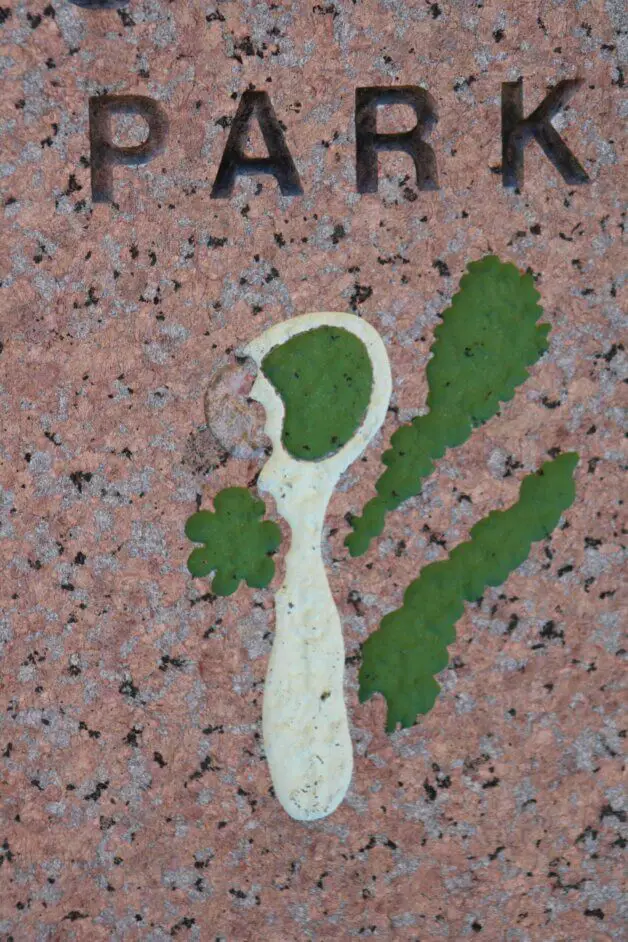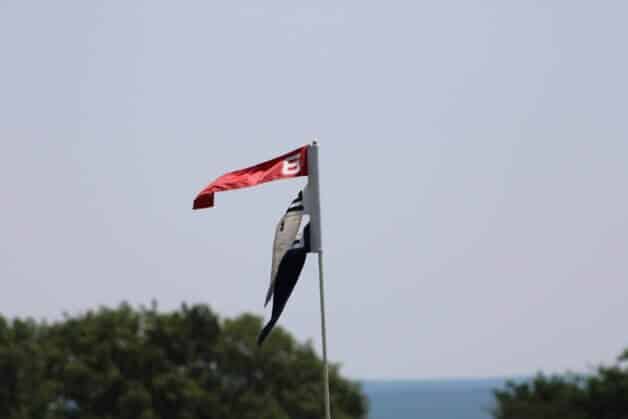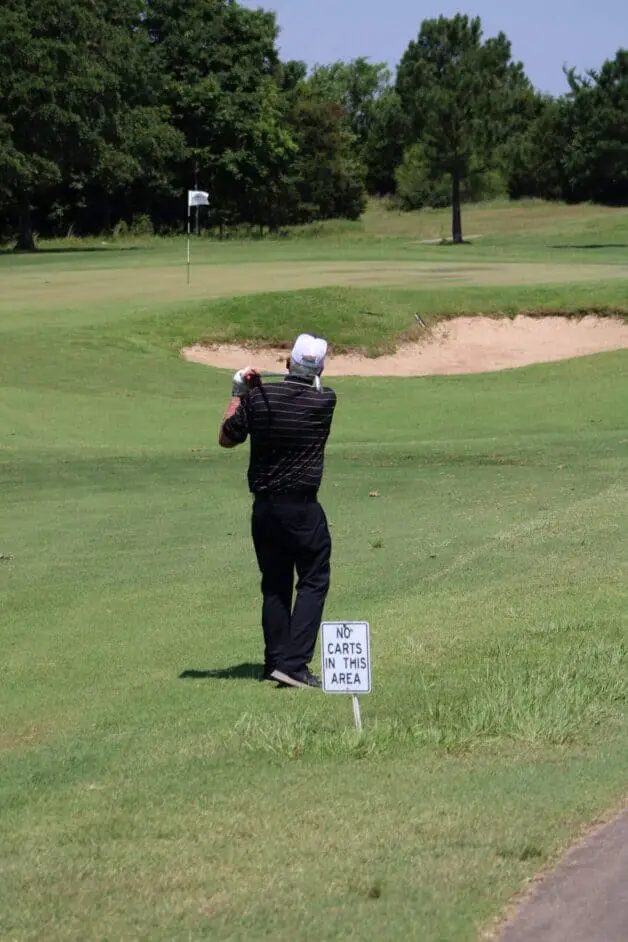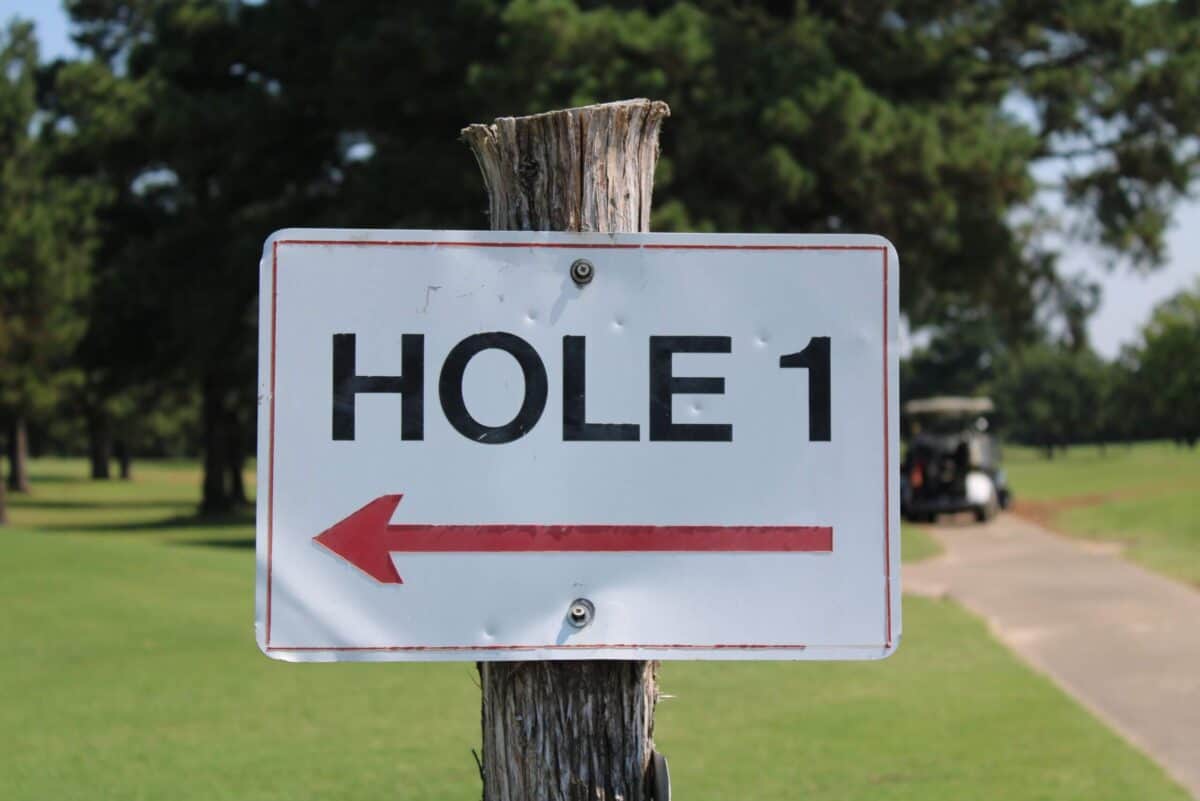Golf has evolved quite a bit since the days it was being played with sticks and pebbles in Scotland. The sport has become a worldwide phenomenon, and while the mechanics of the game remain the same, the equipment has vastly improved to provide players with a superior experience.
Not only are golf clubs now made of high-quality metal and graphite, and golf balls are designed to have rubber cores for optimum performance, but there have also been technological advancements in methods to improve accuracy. The golf rangefinder is one such device that can help golfers estimate distances on the golf course.
Table of Contents
- What Is A Golf Rangefinder?
- Types of Golf Rangefinders
- Laser Rangefinder
- GPS Rangefinder
- Optical Rangefinder
- Should I Use A Golf Rangefinder
- How to Use A Golf Rangefinder
- GPS Rangefinders
- Optical Rangefinders
- Laser Rangefinders
- Tips for Using A Golf Rangefinder
- Proper Aiming
- Using A Golf Rangefinder on A Slope
- Measuring Distance
What Is A Golf Rangefinder?
Determining the distance between the ball and the hole is an important factor when considering the energy required to swing the club, so the ball travels at the right speed and covers the right distance. Some players rely on experience to gauge how far their target is so they can easily switch to the right club for the specific play required. For those who don’t have a lot of experience or those who want to note the proper distance, recent technological advancements can help produce more accurate results.
A golf rangefinder is shaped like a vertical binocular with a magnifying glass that can help you see longer distances by holding the device up to your eye. The rangefinder helps determine how far the target is, whether it’s a flagstick, a bunker face, or a tree. Modern rangefinders come with additional features such as laser beams that provide enhanced accuracy when measuring distances. This article will give you the lowdown on golf rangefinders, including their varieties and answers to some basic questions.
Types of Golf Rangefinders
Laser Rangefinder
Laser rangefinders are the most commonly used, and their popularity is dependent on the accuracy they offer. The laser rangefinder includes laser beam technology that helps read exact distances. The laser beam effectively zooms in on the target and calculates the time taken for the beam you bounce off the target and return to the rangefinder.
The accuracy of the distance measured is determined by How much of the laser beam is reflected, making it easier to get a more accurate reading if the target surface, such as a flagstick, has a reflective property. It also helps if you have a larger surface area to target as it increases the chances of getting a better reading. Many golf courses incorporate small reflective pieces at the top of flagsticks so the distance can be evaluated easily.
All laser rangefinders are not built the same as some might require prism-mounted reflectors at the target location for improved laser efficiency, limiting the number of golf courses you can play on. Another important thing to consider is that the laser beam’s speed varies according to temperatures, which is why it is usually recommended to wait about 40 minutes after the laser center is powered on so it can adapt to the temperature.
Practice is required to perfect the art of using the laser rangefinder, so you can expect it to be slightly difficult aiming the device initially. However, once you have learned how to use a laser rangefinder, you should have no more difficulties determining the total distance to the target.
GPS Rangefinder
GPS rangefinders in golf usually use pin-seeking technology to identify target distances. This technology identifies and locks in when the rangefinder is pointed at a pin which could be the flagstick or any other target. The device then determines the distance to the target and identifies obstacles on the golf course path.
Before using the rangefinder, ensure that a current golf course map is loaded onto it, so the results produced are accurate. Usually, GPS rangefinder brands come with preinstalled maps of golf courses with the option to update to ensure you have the most recent version available. It is better to update your course before starting a game, so the pin locations are relevant.
Once everything is up to date, the GPS rangefinder will ping your location using four GPS satellites. The golf course map also contains GPS coordinates of different hazards and pin placements used to determine the distance to the target, and the accuracy depends on the rangefinder’s ability to connect with multiple satellites at one point in time.
Optical Rangefinder
The optical rangefinder is the least commonly used option, even though it is quite good at measuring distances. The device uses lenses and optical principles to the government the distance to the target.
These rangefinders are easy to use as you have to look with one eye through the eyepiece and adjust the focus to see the clearest image of your target, similar to using a microscope. The height of the pin is used to determine the distance to provide an accurate reading.
Should I Use A Golf Rangefinder
A rangefinder can prove beneficial for your game while becoming part of your golf routine, similar to stretching before making a shot. Improved precision on the field lowers your golf scores and can reduce your handicap rating. The rangefinder can make it easier to determine accurate distances, which can help you figure out which club to use.

You can select a rangefinder for many reasons but ensure that you don’t get one that is for hunting as the market is saturated with them. There are many similarities between the two rangefinders as they are both measuring devices, but the difference lies in the method of measuring the distance. Laser rangefinders use laser beam pins, GPS rangefinders use GPS points, and optical rangefinders use lenses. On the other hand, hunting rangefinders use a distant target mode that is not suitable for golf.
Rangefinders have also evolved to include features that enabled you to record your distances and store other relevant information for game improvement. You should also check tournament rules should be checked to ensure the features of the rangefinder do not conflict with the regulations. Overall, golf rangefinders can marginally improve your game by allowing for more accurate shots, making it worth the investment.
How to Use A Golf Rangefinder
There are different types of golf rangefinders available in the market, each with separate functions and mechanics. There are a few basic steps that are involved in using almost all rangefinders on golf courses.
- Press the button to turn it on
- Locate your target
- Aim the rangefinder
- Activate the rangefinder
- Get your distance reading
If you’re using a rangefinder for the first time, be sure to do a trial run before measuring your actual target. The trial run can involve you aiming a rangefinder at the ground to calibrate the distance and ensure the reading is accurate. It is important to keep the rangefinder stable to get a more accurate reading. Stability can be achieved by relaxing and providing support by creating a solid base to hold a rangefinder in one hand while resting your elbow on your chest. To get the best view possible make sure the rangefinder is aligned with your line of sight to easily aim at the target and push the button to get your reading.

GPS Rangefinders
GPS rangefinders need the golf course map to run effectively, and most golf courses have their maps available online. However, be sure to check if your local golf course is compatible with the GPS rangefinder before you choose to buy one. The GPS rangefinder needs an internet connection and satellite connection to determine your location along with the location of the targets and obstacles. Once you’re sure this is the right rangefinder, you can make the purchase and learn about using it properly.
- Start by loading or updating the map of the golf course on the rangefinder
- Turn on the GPS so the rangefinder I can connect to the relevant satellites and determine your location on the golf course
- Once the rangefinder is connected through GPS, you can select the target and get an accurate reading
Optical Rangefinders
Optical rangefinders might not be that popular option compared to Laser and GPS rangefinders, but they are pretty simple to use.
- Start by looking at the target through the eyepiece
- If the image is blurry, rotate the knobs to adjust the focal length and get a clearer image
- Record the distance to the target
Laser Rangefinders
Laser rangefinders use pin technology that incorporates laser beams to evaluate the distance between your location and the target. This rangefinder requires some practice to get used to so you can get more accurate results. Initially, it might be challenging to understand how to use the device effectively, but you’ll be a pro at it in no time.
- Start by turning the rangefinder on
- Select the relevant mode
- Bring the rangefinder to your eye level and press the button so the laser beam can evaluate the distance to the target
Another important factor to consider is the laser is only as accurate as the reflective surface it falls on, so this is a bedroom better to use if your golf course incorporates reflective pieces on targets such as flag poles.
Tips for Using A Golf Rangefinder
Proper Aiming
You need to incorporate different steps in your routine, whether you’re aiming from the tee or using a rangefinder for shots on the green. If you’re aiming from the tee, you should sometimes determine surrounding hazards and create a mental path in your head for the golf ball. This can help you create a clear path to the whole while helping you avoid hazards. For shots in the middle of the course, be sure to survey the ground conditions and nearby hazards so you can avoid mistakes.
Using A Golf Rangefinder on A Slope
The golf course is usually not a level playing field, as having some hills and pits makes the game more interesting. The distance that the ball travels depends on the slope conditions. Modern rangefinders are equipped to evaluate distances if the ball is on or near a slope. This slope calculation feature is not allowed in tournaments, but it can be very helpful when you’re playing a friendly round of golf.

Measuring Distance
There are limitations to using golf rangefinders as they all have different limits for the distance they can read. There are options that can read up to a hundred yards, while other options can read almost a thousand yards, so be sure to do your research before searching on a golf rangefinder.
The rangefinder size is also important as you do not want to carry a bulky contraption on the golf course, so opt for options that can easily fit into your pocket or be attached to your person. Another important thing to consider when you’re trying to understand how to measure distances is that it requires a lot of practice, and you might need to use it for quite a while before you get the hang of it as the user manual cannot provide all the relevant information.
Final Thoughts
Rangefinders can make any game more fun and easily enjoyable by preventing have you from wasting time estimating the distance from your tee to the flag. This can be beneficial for some golfers, but you should also keep in mind that there are rules related to using rangefinders if you intend to play in professional tournaments. This means you cannot completely disregard the experience and natural instinct that comes with playing golf and evaluating the distance through sight.
At the same time, if you intend on using a golf rangefinder, make sure you spend some time choosing the right model and understanding the functions and limitations of the device. The rangefinder is there to provide you some assistance when you’re evaluating distances so you can make more accurate shots, but it should not become your crutch in case you ever run out of battery.
- Should Tee Boxes Be Level? - January 23, 2024
- 3 Hybrid Distance - November 15, 2023
- Innovations in Golf Mobility: An In-depth Review of Top Golf Scooters - October 12, 2023


